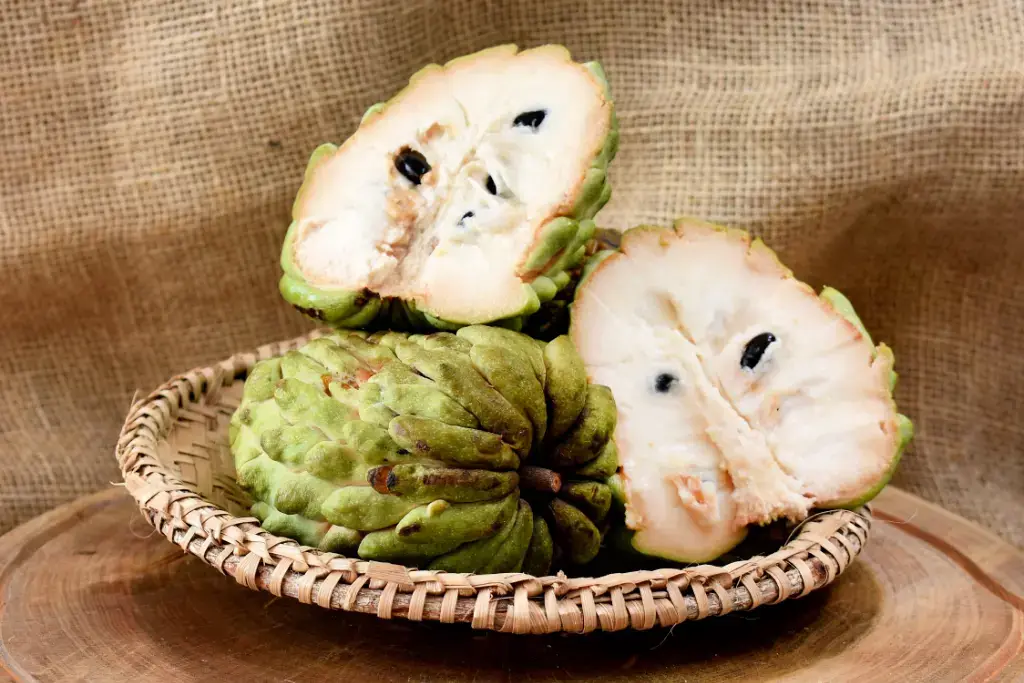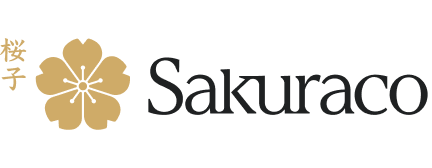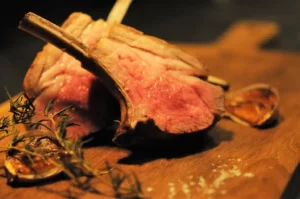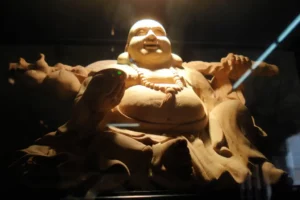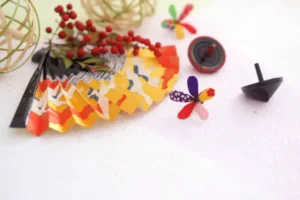Okinawa is likened to the emerald gem of Japan, with its favorable subtropical weather ideal for cultivating unique tropical fruits. These fruits also play a significant role in the nutritional food chain. They actively contribute to the health and longevity of the local population. Let’s explore the five popular fruits of this stunning island together, starting with atemoya!
Table of Contents
ToggleAtemoya
Atemoya is a unique fruit that combines two delicious ones: the cherimoya (custard apple) and the sugar apple. Its name blends parts of both fruit names. This fruit is originally from warm climates, like Okinawa. The village of Onna is especially famous for growing it. Atemoya has a distinctive green, bumpy skin that makes it look like a pinecone!
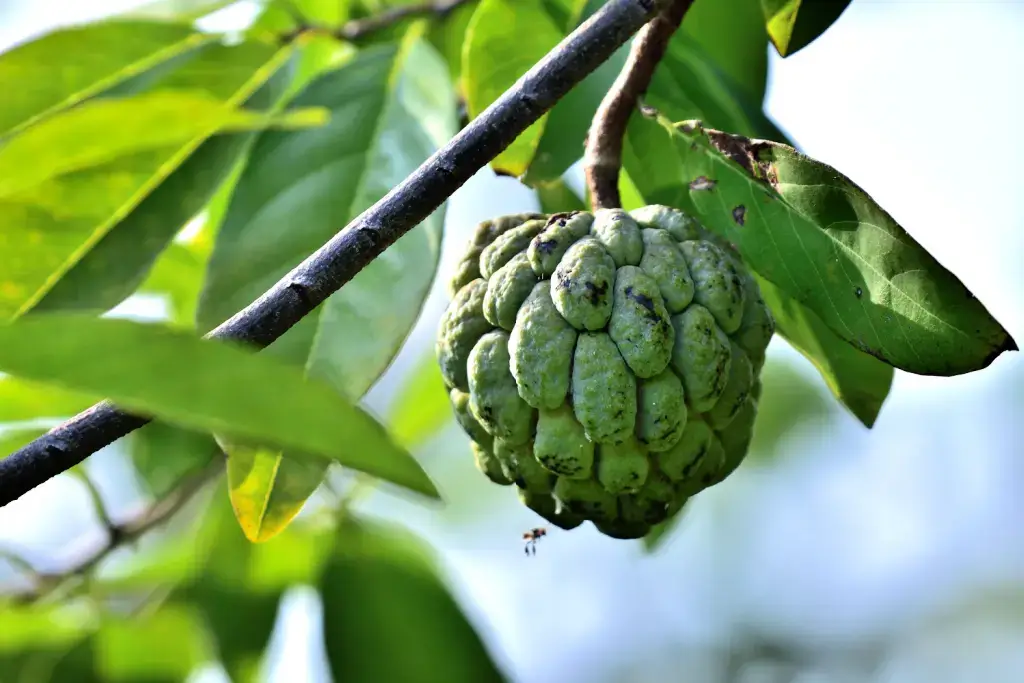
In Japan, the atemoya season starts in December and goes until April, with January being the best time to taste its sweetest flavors. Atemoya is known for its creamy, sweet taste, often described as the “ice cream of the forest”. When ripe, it’s soft and juicy, perfect for enjoying fresh or mixing into yogurt for a tasty treat.
Atemoya comes in different types like Bradley, Island Beauty, and Mammoth, each with a unique flavor and size. Packed with vitamins like C and B6, it’s not just tasty but also good for you, helping to keep your immune system strong and your body healthy.
Shikuwasa
Shikuwasa, also known as Citrus depressa, is a unique citrus fruit. Okinawa boasts a long history with this fruit, which has been growing there for centuries. Shikuwasa is mainly grown in the forested northern areas of Okinawa. This delicious fruit is essential to the Okinawan diet, contributing to the islanders’ renowned longevity.
Shikuwasa trees can grow up to 15 feet tall and produce small, round fruits that look like tiny tangerines. The fruit has thin, often green skin and lots of seeds. Shikuwasa has a strong flavor, which is very sour with a bit of sweetness, stronger than lemons and limes. You can eat the fruit when it is unripe, sour, ripe, and sweeter.
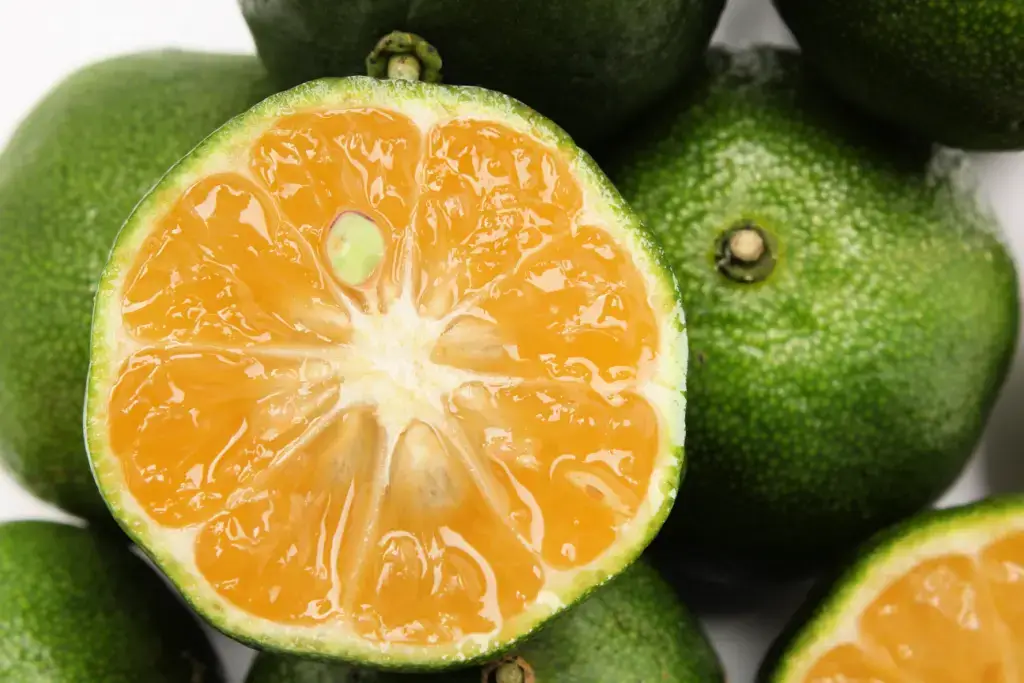
The uses of shikuwasa are diverse and plentiful. To get the juice, you can poke a hole in the fruit to keep the seeds inside. The juice is intense and often too sour to drink straight, so people usually mix it with water or sugar. It’s also used in marinade salad dressings and to flavor dishes like sushi and fish. You can also make jam with this fruit, add it to tea, or use it to decorate drinks.
The fruit’s health benefits are impressive. It’s rich in flavonoids, like nobiletin, which can fight cancer, help prevent obesity, and keep your liver healthy. It’s also full of vitamin C and antioxidants, which help keep you healthy when you eat it.
Tankan
Tankan, also called the southern mandarin orange, is an exclusive type of tangerine grown in Okinawa. These tangerines are smaller than usual and have rough, tough skin that’s tricky to peel. But once you taste one, you might love its sweet and sour flavor!
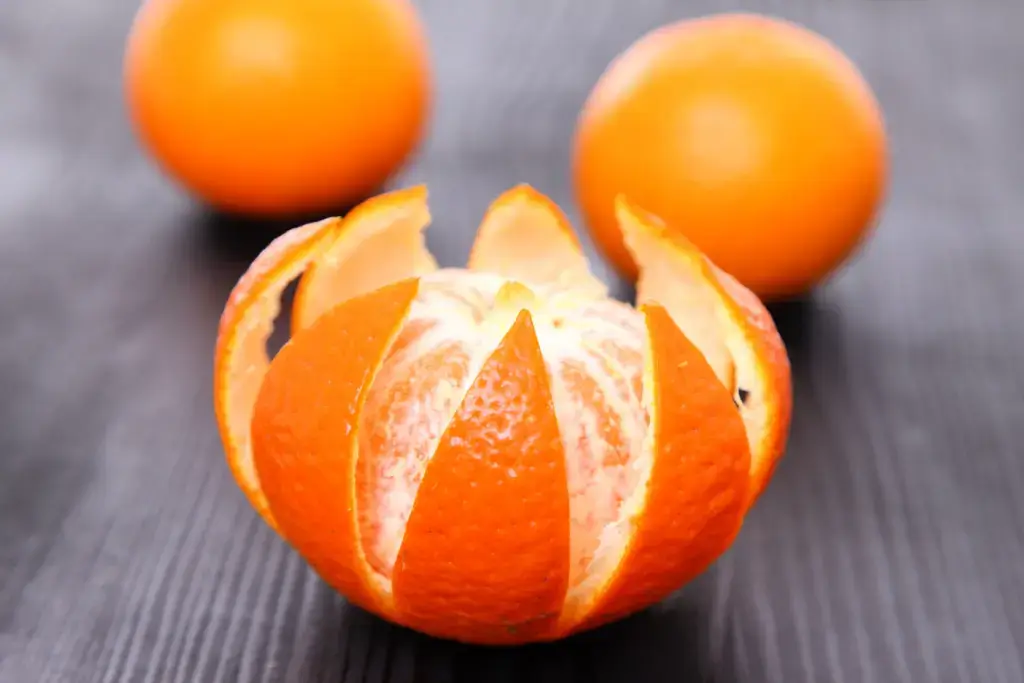
The best place to find tankan is in Izumi, Motobu Town. Here, you can visit orchards where these juicy fruits are grown. Some orchards even have signs inviting people to pick their tankan. You can find tankan from January to late February. It’s a favorite during winter and often decorates tables during the New Year celebrations. And it’s also full of Vitamin C, which helps you stay healthy, especially in the cold winter.
Are you looking for great snacks from Okinawa? Check out Sakuraco! Sakuraco delivers traditional Japanese snacks, teas, and sweets from local Japanese makers directly to your door so you can enjoy the latest treats directly from Japan!
Dragon Fruit
Dragon fruit, also known as pitaya or pitahaya, is a tropical fruit that grows on a climbing cactus called Hylocereus. Originally from southern Mexico and Central America, it’s cultivated in various countries, including Okinawa. The fruit comes in three main varieties: one with pink skin and white flesh, another with pink skin and vibrant red flesh, and a third with yellow skin and white flesh. Its bright colors and spiky skin look exotic, but it tastes mild and slightly sweet, like a blend of kiwi and pear.
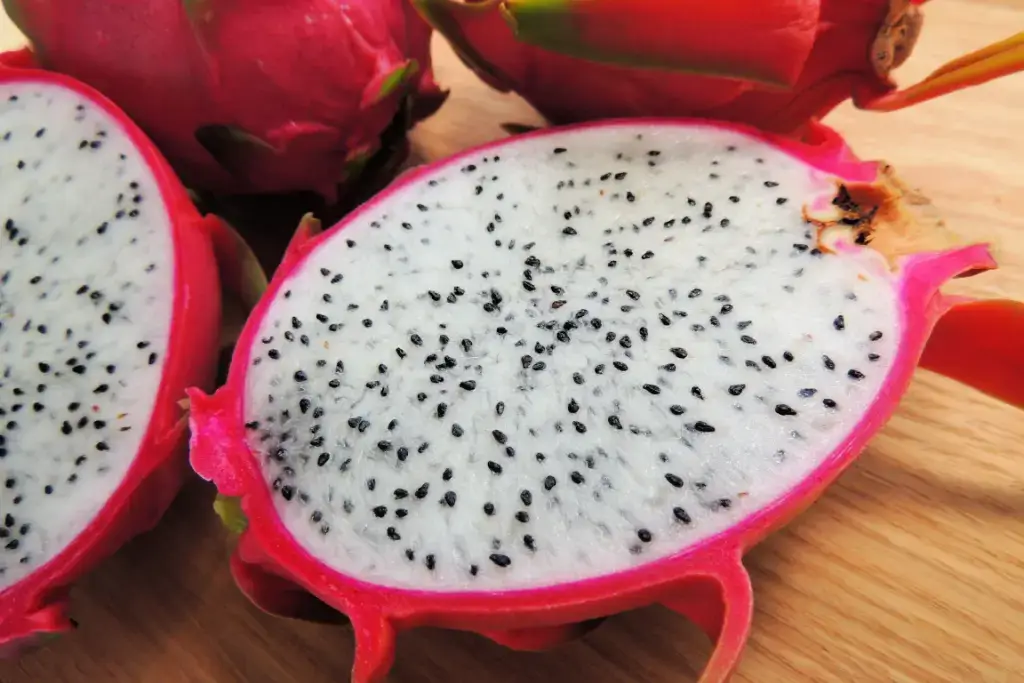
It has a long history and is named for its resemblance to dragon scales. Its flowers bloom only at night, which makes it even more mysterious. In Okinawa, people eat dragon fruit fresh by slicing it or adding it to yogurt, smoothies, and salads. This is a wholesome fruit because it has few calories, fiber, and antioxidants.
Pineapple
Pineapples from Okinawa are known for their delightful fragrance and well-balanced flavor. They thrive in the northern regions where the soil is acidic and well-drained. Introduced to Okinawa in the mid-19th century, the Showa Era (1926-1989) made pineapples a local staple.
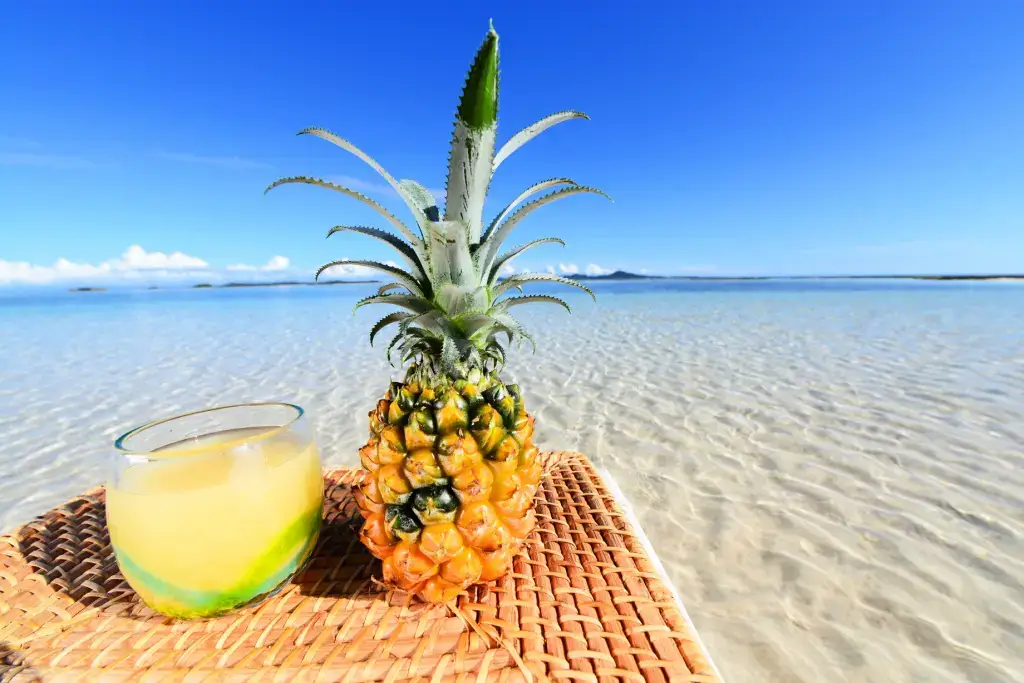
This fruit is also suitable for digestion and can spice up meat dishes with vitamin C and bromelain. Despite its sweet taste, it’s low in calories, making it a guilt-free treat. During the harvest season from May to July, supermarkets across Okinawa and mainland Japan fill up with these yummy fruits, which are enjoyed fresh, canned, or in local treats like chinsuko.
For pineapple enthusiasts, Okinawa is home to Nago Pineapple Park, a fun theme park dedicated to this tropical fruit. Visitors can explore different pineapple varieties, ride an electric train through lush gardens, and indulge in pineapple-themed snacks.
Why should I try Okinawa fruits such as atemoya?
Okinawa offers a delightful variety of fruits that are not only tasty but also packed with goodness. From atemoya’s creamy sweetness to shikuwasa’s tangy punch and tankan’s sweet-sour flavor, each fruit brings a unique flavor experience. These fruits are not just delicious treats but also rich in vitamins and low in calories that keep you healthy. Have you tried Okinawa fruits? Leave a comment and share your favorite!

